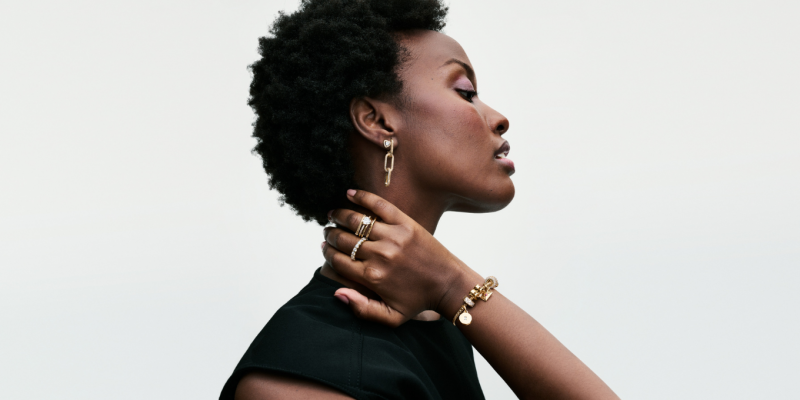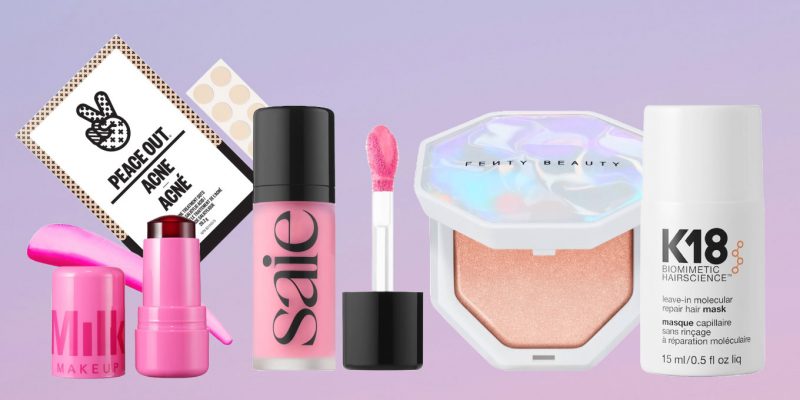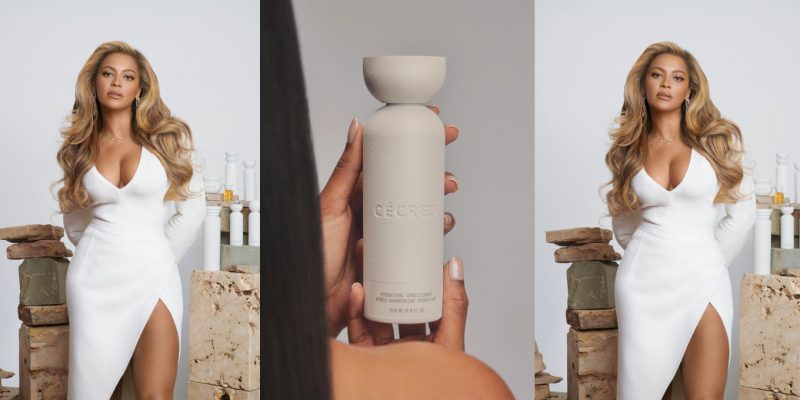Beauty
Skin care tips: Cleanse your face like an expert
There’s an art to coming clean. Science, technology and new ingredients tweak your beauty regimen to yield your best skin yet.
by : Michelle Villett- Mar 5th, 2014

What do Lady Gaga, Ginnifer Goodwin and Alexa Chung have in common? They have all fessed up to not washing their faces every night. (And, surprisingly, their complexions don’t seem the worse for it.) Just how important is cleansing anyway? We decided to ask the experts.
Dr. Mark Lupin, lead dermatologist at Cosmedica in Victoria, B.C., and a clinical instructor in the department of dermatology and skin science at the University of British Columbia, says that cleansing helps with conditions like acne and giving skin that all-important
healthy glow. That’s because a good wash helps to remove some of the dead skin cells that contribute to a dry, sallow look when they build up on the surface. Cleansing also prevents dirt, makeup and sebum from clogging pores and causing breakouts. Another incentive: Some cleansers, such as Serious Skincare Glycolic Cleanser ($44.50), contain moisturizing or medicated ingredients that stay on the skin to help with eczema, rosacea and acne.
CULT FAVES: 10 skin care cleansing products
Washing your face once or twice a day is sufficient, says Dr. Beatrice Wang, a dermatologist at Carey Wang Centre for Dermatology in Montreal.
Nighttime is best to remove the day’s sweat, sebum and makeup; in the morning, you can either cleanse again or make like Salma Hayek and just splash with water. (The 47-year-old attributes her still-
youthful complexion to once-daily cleansing.)
BEAUTY FIX: 10 major beauty innovations
4 new ingredients to get your face familiar with.
Charcoal: Ideal for oily, combination and acne-prone skin, charcoal acts like a magnet to draw dirt and impurities from pores.
Try Bioré Deep Pore Charcoal Cleanser ($10).
Silver: Gentle and non-drying, silver has an antibacterial, antimicrobial effect that makes it a good option for the treatment of acne.
Try Sonya Dakar NutraSphere Silver Clarifying Wash ($65).
Bubbles: Big in Japan, carbonated cleansers fizz on contact with skin and claim to boost blood circulation.
Konjac root: A beauty staple of Asian cultures for 1,500 years, sponges made from the roots of the konjac plant (a type of Japanese potato) gently cleanse and exfoliate.
Try Boscia Konjac Cleansing Sponge with Bamboo Charcoal ($22).
Know what the 3 latest trends in cleansing are on the next page…
 Cleansing oils and balms
Cleansing oils and balms
How they work: Based on the principle of “like attracts like,” oil-based cleansers dissolve makeup, dirt and sebum— but because they contain oils, like jojoba or macadamia nut, they won’t strip skin of moisture.
Best for Dry-skin types or wearers of oil-based makeup. Proceed with caution if you have acne, as any traces of oil left on the skin are likely to clog pores.
Try The Body Shop Camomile Sumptuous Cleansing Balm ($16); Garnier Clean Nourishing Cleansing Oil ($11).
BEAUTY FIX: 12 best beauty products with coconut oil
Micellar cleansers
How they work: Applied to the skin with a cotton pad, these no-rinse soap-free cleansing waters consist of microscopic oil molecules (micelles) suspended in water that effortlessly pick up dirt and makeup.
Best for All skin types, especially sensitive. “They’re especially good for
someone whose skin stays red and tight hours after regular cleansing,” says Wang. “You don’t need to wash with water to get clean.”
Try Lancôme Eau Fraîche Douceur ($39); L’Oréal Paris Sublime Soft Gentle Micellar Solution ($12).
Lactic-acid cleansers
How they work: “Lactic acid has the highest natural moisturizing factor of all the alpha-hydroxy acids, so it hydrates while acting as a
gentle exfoliant,” says Robin White, director of global press for Philosophy.
Best for Dry and sensitive skin, or people with active acne.
Try Philosophy Miracle Worker Miraculous Anti-Aging Lactic Cleanser & Mask ($45).
BEAUTY TIPS: Choosing the right skin care products
Read to find out more expert skin care tips on the next page…
 Magic touch: Massage has long been
Magic touch: Massage has long been
the secret weapon of facialists, but it’s easy enough to incorporate a few strokes and swirls into your cleansing routine and get a glow going at home. “The face and neck have the highest concentration of lymph nodes in our bodies, which carry away waste and bring in nutrients, so it’s important to stimulate them on a regular basis,” explains JoannaVargas, a celebrity facialist in Manhattan whose clients include Naomi Watts and Michelle Williams.
EDITORS’ PICKS: 10 best Canadian spas
Acne, she claims, is a sign of poor lymphatic drainage, so cleansing in a downward circular motion as you move from forehead to neck can help mobilize the toxins to be expelled. “Conversely, if you’ve got dry skin, it’s the opposite issue—your lymphatic system isn’t able to carry nutrients to your skin cells,” she says. Start at the neck and move in upward circles toward the forehead. You will see a difference (fewer breakouts,
better-hydrated skin) within days.
SKIN CARE: 5 reasons to skip your morning facewash
Dirty secret: File this under #SRSLY? First, there was the “no poo” movement, where women the world over decided that ditching shampoo was the key to well-behaved hair. Now, there’s another grooming trend finding life in online forums: “the caveman regimen.” It involves not washing your face—like, ever. Hard-core devotees do everything they can to avoid having their faces touch water and swear their skin looks the better for it. What gives? Perhaps quitting cold turkey means less irritation: “Some people are too aggressive, stripping off so much oil that they get a rebound reaction,” offers Wang. It might be that others are sensitive to the ingredients in most cleansers. “It’s not that a cleanser that works couldn’t be found; it’s that they’ve given up,” suggests Lupin.
Find out how to wash your face the right way on the next page…
 Normal skin
Normal skin
Do:
For a better clean, remove any heavy foundation, long-wearing lipstick or stubborn mascara before you wash your face. Try Clinique Take the Day Off Makeup Remover ($22). Use your fingers to apply a dime-size amount of cleanser and lightly rub it in for a few seconds before rinsing.
SKIN CARE: The 7 best cleansing wipes
Dry or sensitive skin
Do: Use gentle, non-lathering and
nonabrasive cleansers, such as La Roche- Posay Physiological Cleansing Milk ($22), which leave your skin’s protective oils intact— especially if you have eczema or rosacea. Take it easy. “It’s quite possible to cleanse without any scrubbing,” says derm Mark Lupin. “Unless you’re removing makeup, face cloths and sponges are not necessary. If you use them, be gentle.” Pat, don’t rub, your skin dry with a clean towel— it’s much easier on the skin.
Don’t: Use hot water. It removes natural oils from the skin much faster than lukewarm or cool water does, leaving it dry and aggravating sensitive skin or rosacea.
Don’t: Cleanse too often. Once or twice a day is enough, says derm Beatrice Wang. Plus, if you wash too much, you’ll strip the oils your skin needs to keep its barrier intact.
SKIN CARE: Best cleansing water products
Oily or acne-prone skin
Do: Use a gel, foaming or exfoliating cleanser, such as Dermalogica Clear Start Breakout Clearing Foaming Wash ($22) or Neutrogena Oil-Free Acne Wash ($10). Oily skin is thicker and has more sebaceous glands, so it can handle cleansers that remove some of the skin’s natural oils.
Don’t: Dry off like everyone else. “My advice
to anyone who breaks out is to forget drying with a regular towel,” says celebrity facialist Joanna Vargas. Unless you plan on doing laundry after every face wash (no thanks), Vargas recommends using paper towels that you can throw away after each use; she believes that the transfer of bacteria from used towels is a big contributor to breakouts.
Read more:
10 skin care cleansing cult faves
Makeover your skin in 5 days
The 5 benefits of a facial massage
5 reasons to skip your morning wash
Newsletter
Join our mailing list for the latest and biggest in fashion trends, beauty, culture and celebrity.
Read Next

Fashion
Are Fashion Brands Getting Greener?
While the fashion industry is making a lot of noise about being more sustainable, a closer look shows that its earth-friendly commitments are often more illusion than reality.
by : Marouchka Franjulien- Apr 19th, 2024

Beauty
What Beauty Packaging Is Actually Sustainable?
We sought out leaders in the field to help us get to the bottom of the blue bin once and for all.
by : Victoria Christie- Apr 19th, 2024

Fashion
This Jewellery Brand Has a Whole New Look And It’s Everything
Here are the seven pieces we’re coveting.
by : ELLE Canada- Apr 10th, 2024




